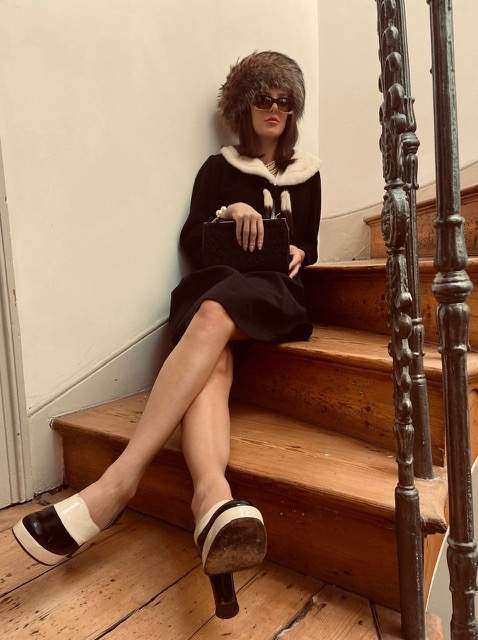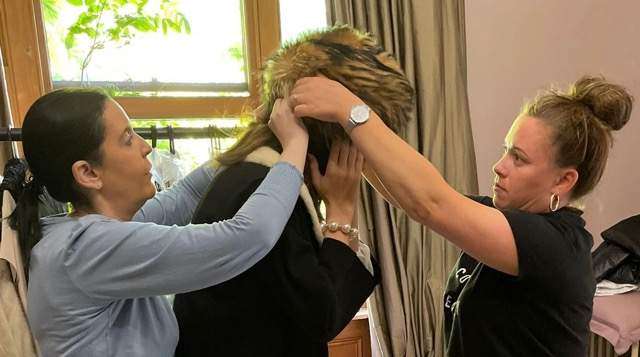
Fashion is important whether you subscribe to this idea or not. Perhaps you’re not interested in haute couture but it’s a strong bet that you enjoy television and films. When you think of character like Carrie Bradshaw, Villanelle, or even more classic ones such as The Girl (Marilyn Monroe) in The Seven Year Itch and Holly Golightly (Audrey Hepburn) in Breakfast at Tiffany’s, the clothing they wore is inseparable from your memory of the actress in each of these roles. Costume designer Deborah Cantor revels in the responsibility that the perfect wardrobe demands. Respected and admired by the industry, Deborah is particularly talented when it comes to creating designs that imbue characters with a style as well as an emotional subtext. The result of this is a greater empowerment to the actors she works with and a more convincing performance for the audience to enjoy. This is particularly impactful with productions which present real life people and scenarios. Professionally trained at the BBC, Ms. Cantor’s resume spans period pieces like Secret Dickens to modern day competition shows like the Royal Television Society awarded Strictly Dance Fever and BAFTA Nominee The Great British Sewing Bee. She relates, “Sharing my creations and visuals with the masses is a distinct honor. This is an industry that gives people an ideal and dream, something we aspire too, as well as a way to share that vision and prove that anyone can dress in something similar to their favorite celebrity, model, singer. We tell a visual story that brings magic to the screen or page of the magazine.”

April Ashley’s story has finally reached a moment where it is relevant to so much of the world. This transgender icon and leading figure is well known in the UK for the scrutiny of the press and the public. A famed and successful model, she was outed by the British press for having had gender reassignment surgery and endured a painful court battle which resulted in the annulment of her marriage to Arthur Corbett. Recent advances in transgender acceptance have brought this story to a worldwide audience in a special titled The Extraordinary Life of April Ashley, airing on Channel 4 in the UK. This production demanded that Deborah scour London to obtain design pieces for Ms. Ashley’s remarkable style. This offered ample opportunity for a creative touch as Ms. Cantor notes, “I had many scenes to recreate, some of which involved singles of April, the DOP panned in on these looks very closely. Jane (Preston, director) sent me detailed descriptions of the sets, locations, and colors in advance, the shades of my color palette and the texture of fabric I chose were visually important. I knew I wasn’t completely recreating but I wanted to make these looks something April would have worn and that I could see her embody. The court look was the most important.” This “court look” as with so many others which Deborah manifested for The Extraordinary Life of April Ashley presented much more than simply an aesthetic inclination of the wearer. April was one of the first transgender women in UK history. As a strong and beautiful woman, she pushed many boundaries to their breaking point and was instrumental in causing a society to rethink their position on the definition of gender. Deborah reinforces, “April was a strong woman and a member of a minority sector. She came from working class roots and broke into high society, I felt a strong sense of responsibility to her memory in making the wardrobe choices communicate this.”

For the BAFTA Award Winning Series Liverpool Narcos, Deborah designed the costumes of a far less inspirational figures than that of April Ashley. Presenting the 80s and 90s drug trade in Liverpool, this three-part series recreated the manner in which heroin, ecstasy, and cocaine made their way in to the UK via this port city. Ms. Cantor’s creations are found throughout the production from the blue uniforms of staff members at The Adelphi hotel in Liverpool to the casual garb of Middle Eastern drug dealers to authentic Ralph Lauren and Armani pieces for crime figures in a nightclub. Astoundingly, this production took place during the Covid lockdown so sourcing pieces for the costumes was a nearly herculean task. Deborah confirms, “The most challenging aspect of designing this show was that it was all done in lockdown. It was so satisfying and rewarding finding certain pieces of costume that had been directly mentioned in the script, when no visuals were in existence. The Lacoste Roland Garros tracksuit took some time to find. It was described in the scene as being in mint condition. It wasn’t easy to locate a 90s tracksuit that was in perfect condition. As a Costume Designer these things are so fulfilling when you discover authentic “gems” you know are perfect for a character and read true visually, some of these dealers were menacing and important to show. I was proud that I established a number of different looks spanning across different continents and uniforms. They were dangerous people running drug rings in Liverpool taking over the city.”

The embodiment of a character, real or fictional, on-camera is the result of many professionals working at the highest level. Like the performance an actor delivers, there is often a depth to the costumes; details that tell a deeper story if one only takes the time to consider them. To perceive the designs of Ms. Cantor as mere clothing would be a failure to consider parts of the history of each character. As Deborah herself expresses, ““It is my proud responsibility to put something visually identifiable on screen in front of millions of viewers. Often, we make history with iconic characters or bring to life a forgotten period of time. We, in this area of the industry, make a strong statement with our art. It is a very important medium to visually represent an ideal for viewers/readers/consumers.”
Writer: Coleman Haan